Contact: reservations@thescubaplace.co.uk
Tel: 0207 644 8252

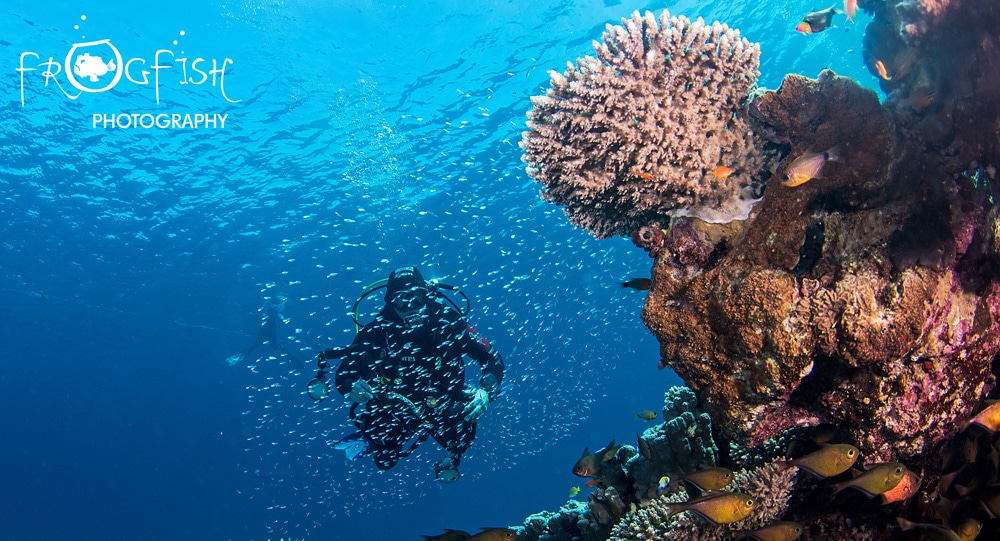
With the noted absence of the three witches, I shall name the place – El Gouna in Egypt. When? 10 years and more ago.
The hurly-burly was done after week one, and the Antinal and Dioralyte had got me back to near normal in readiness for diving in the remaining half of my two-week trip to this fantastic dive destination. It had been a good few months since I had been in the water, so after a check dive and a second sensible dive on day 1, day two beckoned – a proper dive to start the day off with! I jumped in and took a steady descent to 35 metres. My computer tells me that I spent only 4 minutes at depth, and had a very slow and gentle ascent to the shallows, where I spent an hour at between 15 and 8 metres, having a ball on a beautiful reef in bright sunlight. It was one of those dives where I was truly gutted to have to surface and get back on the boat, but battles have to be lost and won I suppose…..
So this is where the next battle began – I got a bend. My peripheral vision became blurred and sparkly (although no dagger before mine eyes I am pleased to report), followed by tingling in my fingers, and then within 10 minutes, acute pain in my elbows, wrists and shoulders, accompanied by tightness across my chest. I suspected that I had a bend, as all of the symptoms told me so, and relayed my suspicions to the boat crew – I was given water, sat in the shade, and was told to wait the 10 minutes that it would take to get back to shore where I could have some oxygen if I still felt less than proper.
By the time we got off the boat, I did feel better – almost back to my norm (which isn’t that good – too much rugby in my youth) so being a stubborn so and so, I brushed it off, went back to my Hotel and clambered into bed with my denial hat firmly in place and some brufen to combat the nasty headache I had also developed. Notice ‘denial’ and ‘dunce’ (to cite just one example) begin with the same letter……
In the early hours of the morning however, I woke up in the same pain in my arm joints, so finally took off my denial hat, and phoned DAN with whom I have always been insured. Within 10 minutes, I had been called back by a hyperbaric Doctor, and referred to the chamber at the El Gouna Hospital. A taxi picked me up (all arranged by DAN) and drove me the 5 minute trip to the excellent facilities there.
And this is where the real issue began – it wasn’t the two sessions I had to undergo in the pot that had the biggest impact, or the pain, nerves, fear or the boredom of being stuck in a metal tube alone for the best part of a day – it was the rehydration ‘therapy’ that I underwent.
Upon arrival at the chamber reception, I was given two big bottles of water, and told to drink them. On top of the 4 litres I had consumed overnight, the vitamin injections, and the saline drip, my kidneys were now starting to float. Then, another bottle was downed before entering the chamber, where there were three more bottles of the same size to keep me company during my first 7 hour stint! By my maths, that is 12 litres of water that I had drunk or had to drink, and this is on top of the ‘self-medication’ I had done with my own bottles! I am sure I had developed the physique of a Sumo wrestler by this stage, but my problems were only just beginning!
 The problem that I now faced wasn’t too serious – I had only one pee-bottle!
The problem that I now faced wasn’t too serious – I had only one pee-bottle!
However, I was in safe hands, getting treatment (and I must say that after having been at ‘depth’ for less than 15 minutes, I was pain free – amazing!), and had a book to read. Breathing O2 for 20 minutes out of every 30 was a little tiresome due to the weight of the mask, but I was on the mend – that is until my bladder decided to shout at me!
Just like one of those so-called MENSA tests on your social media pages, I now had to work out how to dispose of 6-8 litres of water into the single one litre pee bottle!
So the first ‘drain’ wasn’t too much of an issue, and I am about 45 minutes in to a 7 hour session. That said, the waste bottle is now full, and I still have roughly 6 litres of water in my bladder, and three full bottles of water in front of me. And you know what it is like – once you break the seal….!
90 minutes in, and I am ready to burst again, so I have to drink 2 more litres to free up another bottle, only for me to fill it right up immediately.
By two hours in, I am starting to calculate the PPPH (projected pee per hour) ratio, combine it with the DTFW (Drink the Water) and subtract the HMPCIA (how much pee can I absorb) coefficient.
At three and a half hours in, the doc comes over the speaker and says I only have two more hours to go before they start the ascent, so I am more than relieved (ouch – sorry!) and adjust my calculations – At four hours in, I have drunk 9 litres of water, and disposed of 3, so I am still carrying my core of 6. I have one full bottle of water left, and one that is half full – the third is off colour for water, and not to be drunk, and the same goes for the original pee bottle too, which is sitting precariously on the floor as far away from me as possible – I am super clumsy! So, to be able to pee again, which I MUST do at this stage, I need to drink another litre of water!
This I do of course, and then immediately fill the empty two litre bottle up again – my maths tells me that I now have 5 litres within me, but I have no more PBS (pee bottle space) – the good news is that I only have 2 more hours to go before they bring me up to the surface again. So the next 90 minutes are spent concentrating on my book again (now starting it for the second time) and trying to relax about the pee-bottle situation.
It didn’t work – 40 minutes later, the dam was about to break again, and I had only managed to drink a measly half a litre more (breathing O2 is thirsty work, but not that thirsty!) So it was back to drinking another litre and a half before I could pee again………not the easiest of tasks I can assure you, but I did it, much to the relief of my kidneys.
The problem now came down to the fact that I still had 5 litres in my bladder, and no PBS left, and still had another 30 minutes before the ascent. Manageable perhaps? Categorically, NO! The ascent took over an hour, and I now know more about displacement theory than Archimedes himself.
By the time the doors opened, I could barely walk. My fingers were numb, my spine had been removed, tied in a knot and re-inserted without anaesthetic and my kidneys were screaming at me – this was the most pain I had ever suffered, and I am no stranger to A+E or the orthopaedic surgeon’s blade either………a beaming smile from my Doctor together with a request to come and have a seat got the only response that this story could end with – growled though clenched teeth was a very deliberate ‘Piss Off!’
After all, fair is foul, and foul is fair.
All joking aside, I learnt some very serious lessons through this experience – never doubt or deny any potential symptoms of DCS. Never take for granted that you are OK if your dive profile is OK – I had spent a week with a dodgy stomach, and although I felt better, I had expelled all of the electrolytes, salts et al from my body, resulting in the copious fluids I was drinking (as I always do when diving) not being absorbed properly. I got a bend in my shoulder as a result of scar tissue from a previous injury combined with dehydration, two of the most common contributors of DCS perhaps, and yet my dive profile was as conservative as it could have been. I now pop a fizzy multi-vitamin tablet full of electrolytes and scientific stuff into a bottle of water every day leading up to, during and after a dive trip just to make sure I am able to metabolise fluids properly.
Dive safe everybody!
The Scuba Genies

Over the next 12 months, specialist scuba holiday company Dive Worldwide will be supporting Bite-Back Shark & Marine Conservation with donations collected from client bookings to any one of its stunning dive destinations around the world. The independently-owned operator expects to raise £3000 for the UK charity.
Manager at Dive Worldwide, Phil North, said: “We’re especially excited to work with Bite-Back and support its intelligent, creative and results-driven campaigns to end the UK trade in shark products and prompt a change in attitudes to the ocean’s most maligned inhabitant.”
Bite-Back is running campaigns to hold the media to account on the way it reports shark news along with a brand new nationwide education programme. Last year the charity was credited for spearheading a UK ban on the import and export of shark fins.
Campaign director at Bite-Back, Graham Buckingham, said: “We’re enormously grateful to Dive Worldwide for choosing to support Bite-Back. The company’s commitment to conservation helps set it apart from other tour operators and we’re certain its clients admire and respect that policy. For us, the affiliation is huge and helps us look to the future with confidence we can deliver against key conservation programmes.”
To launch the fundraising initiative, Phil North presented Graham Buckingham with a cheque for £1,000.
Visit Dive Worldwide to discover its diverse range of international scuba adventures and visit Bite-Back to learn more about the charity’s campaigns.
MORE INFORMATION
Call Graham Buckingham on 07810 454 266 or email graham@bite-back.com
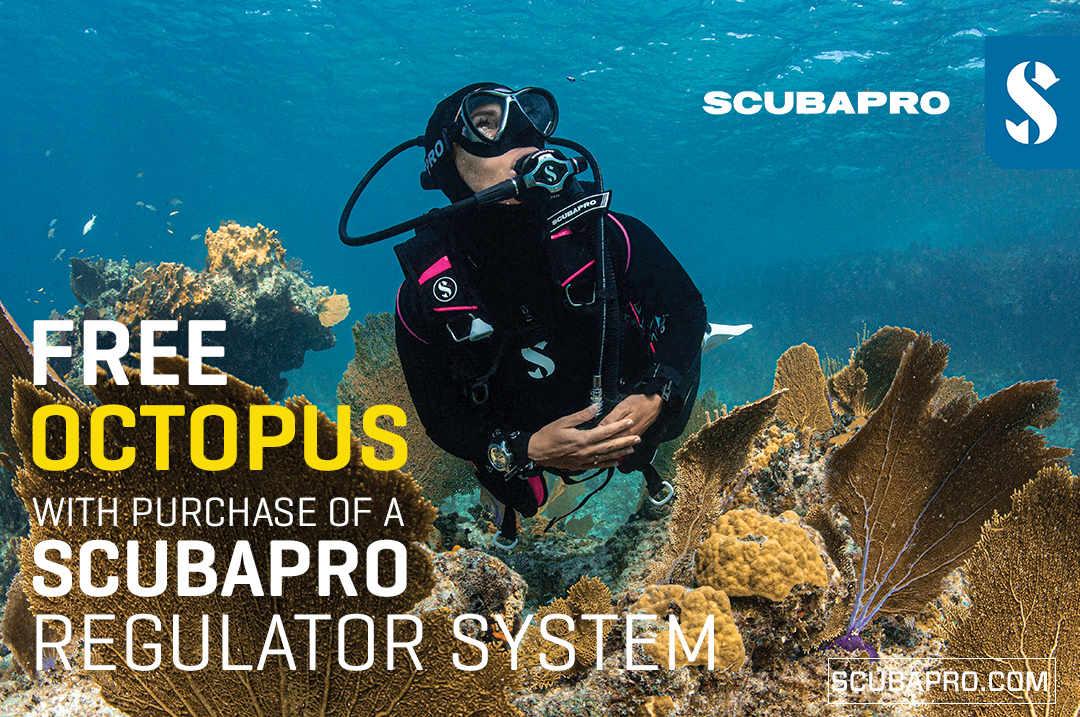
Free Octopus with every purchase of a SCUBAPRO regulator system
Just in time for the spring season, divers can save money with the FREE OCTOPUS SPRING PROMOTION! Until July 31st SCUBAPRO offers an Octopus for free
with every purchase of a regulator system!
Get a free S270 OCTOPUS with purchase of these combinations:
MK25 EVO or MK19 EVO with A700
MK25 EVO or MK19 EVO with S620Ti
MK25 EVO or MK19 EVO with D420
MK25 EVO Din mit S620Ti-X
Get a free R105 OCTOPUS with purchase of the following combinations:
MK25 EVO or MK19 EVO with G260
MK25 EVO or MK17 EVO with S600
SCUBAPRO offers a 30-year first owner warranty on all regulators, with a revision period of two years or 100 dives. All SCUBAPRO regulators are of course certified according to the new European test standard EN250-2014.
Available at participating SCUBAPRO dealers. Promotion may not be available in all regions. Find an authorized SCUBAPRO Dealer at scubapro.com.
More information available on www.scubapro.com.
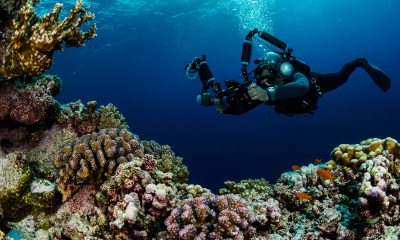

Hone your underwater photography skills with Alphamarine Photography at Red Sea Diving Safari in March
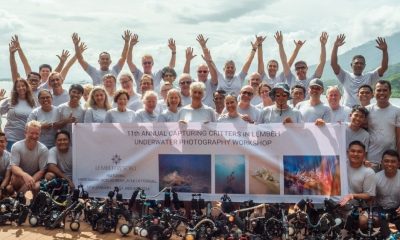

Capturing Critters in Lembeh Underwater Photography Workshop 2024: Event Roundup
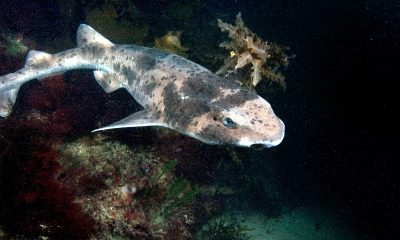

Creature Feature: Swell Sharks
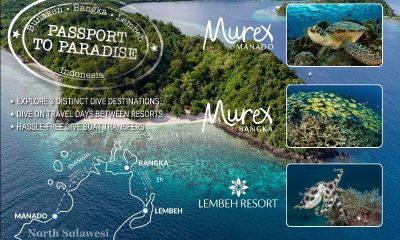

Murex Resorts: Passport to Paradise!
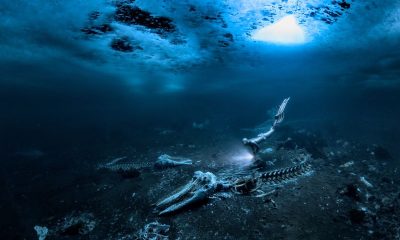

Diver Discovering Whale Skeletons Beneath Ice Judged World’s Best Underwater Photograph
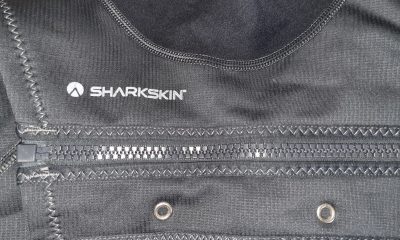

GEAR REVIEW – Revolutionising Diving Comfort: The Sharkskin T2 Chillproof Suit
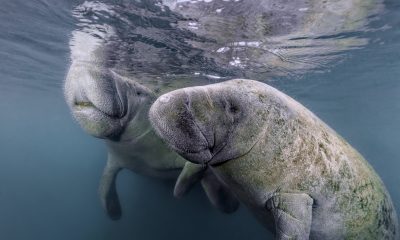

Save the Manatee Club launches brand new webcams at Silver Springs State Park, Florida
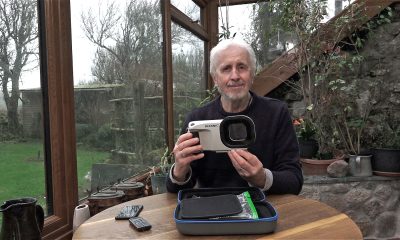

Gear Review: Oceanic+ Dive Housing for iPhone